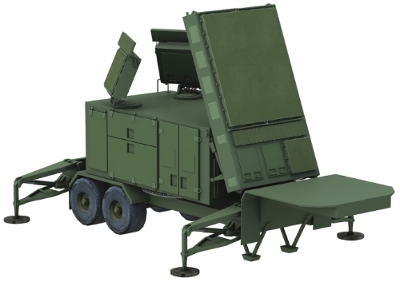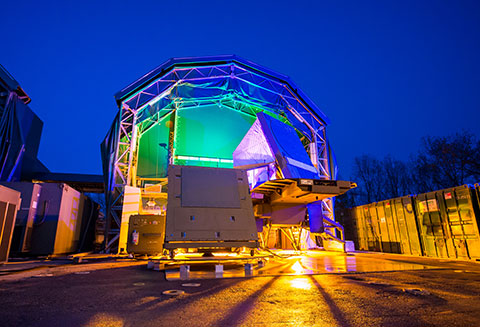Raytheon’s Patriot radar gets upgrade to combat future drones, planes, missles
Air and missile defense is about to get an upgrade now that Raytheon just completed upgrades the combat-proven Patriot Air and Missile Defense System. The upgrades will deliver 360-degree capability and keep Patriot on top of more sophisticated threats, such as aircraft, drones, and cruise and ballistic missiles.
The Patriot radar main array was enhanced with gallium nitride- (GaN) based, Active Electronically Scanned Array (AESA) technology. Raytheon engineers are now working on a GaN-based AESA, full-size, main panel radar array and are on track to have a full-scale main array prototype fully functional early this year, after only 24 months of development.

“Raytheon has invested more than $150 million in GaN technology and learned invaluable lessons while building our GaN-based AESA full-scale prototype,” said Ralph Acaba, vice president of Integrated Air and Missile Defense at Raytheon’s Integrated Defense Systems business. “This ensures Raytheon is able to rapidly develop, build, test and deliver a combat-ready GaN-based AESA radar that gives Patriot 360-degree capability.”
Last year, Raytheon built a GaN-based AESA rear-panel array and integrated it with a radar for potential use in Patriot, using existing and recently modernized back-end processing hardware and software. The radar then tracked targets of opportunity and created 360-degree views.
The Raytheon-built GaN-based AESA radar uses three antenna arrays mounted on a mobile radar shelter to provide 360-degrees of radar coverage. The main AESA array is a bolt-on replacement for the current Patriot antenna. The GaN-based AESA array measures roughly 9′ wide x 13′ tall, and is oriented toward the primary threat. The new rear panel arrays are a quarter the size of the main array, and let the system look behind and to the sides of the main array to offer Patriot the ability to engage threats in all directions.
Raytheon’s Patriot is owned by 13 nations, has more than 200 combat engagements, 1,400 flight tests, and 3,000 ground tests.
Raytheon goes virtual
Not only has the company been working on hi-tech military technology, but it also decided to dabble in virtual reality. A new virtual reality app puts users on a New England hilltop allowing them to scan the horizon from the viewpoint of Raytheon’s new 360-degree, missile-defense radar. The app requires a Google Cardboard viewer. Raytheon offers free Google Cardboard viewers.


Comments are closed, but trackbacks and pingbacks are open.